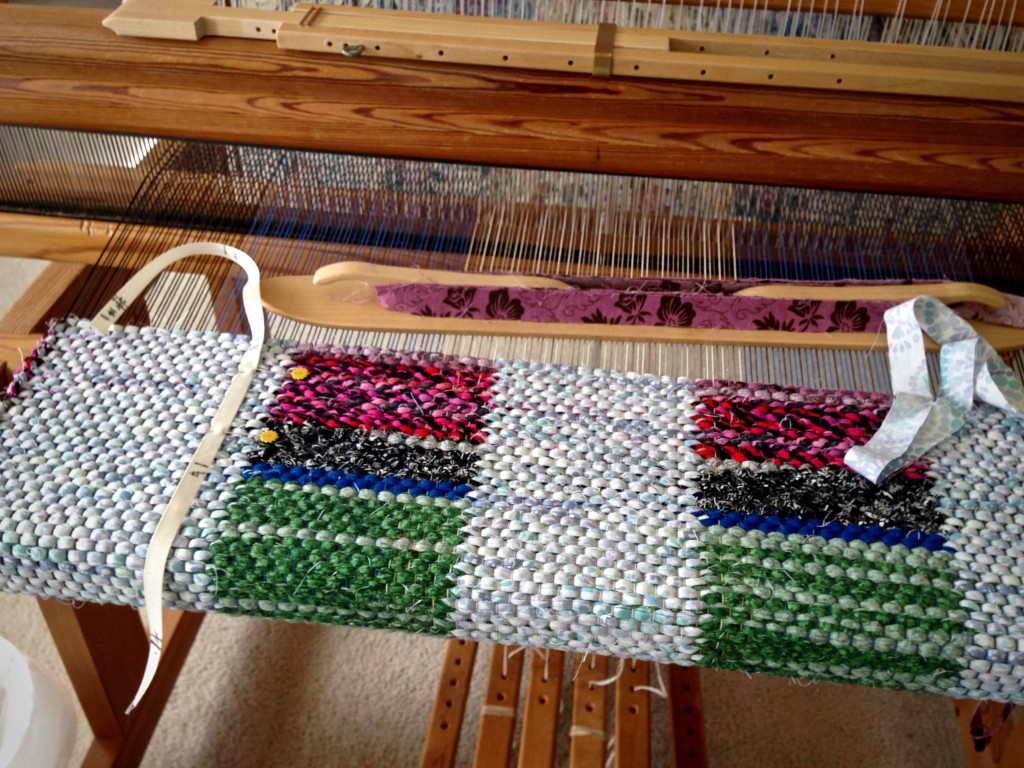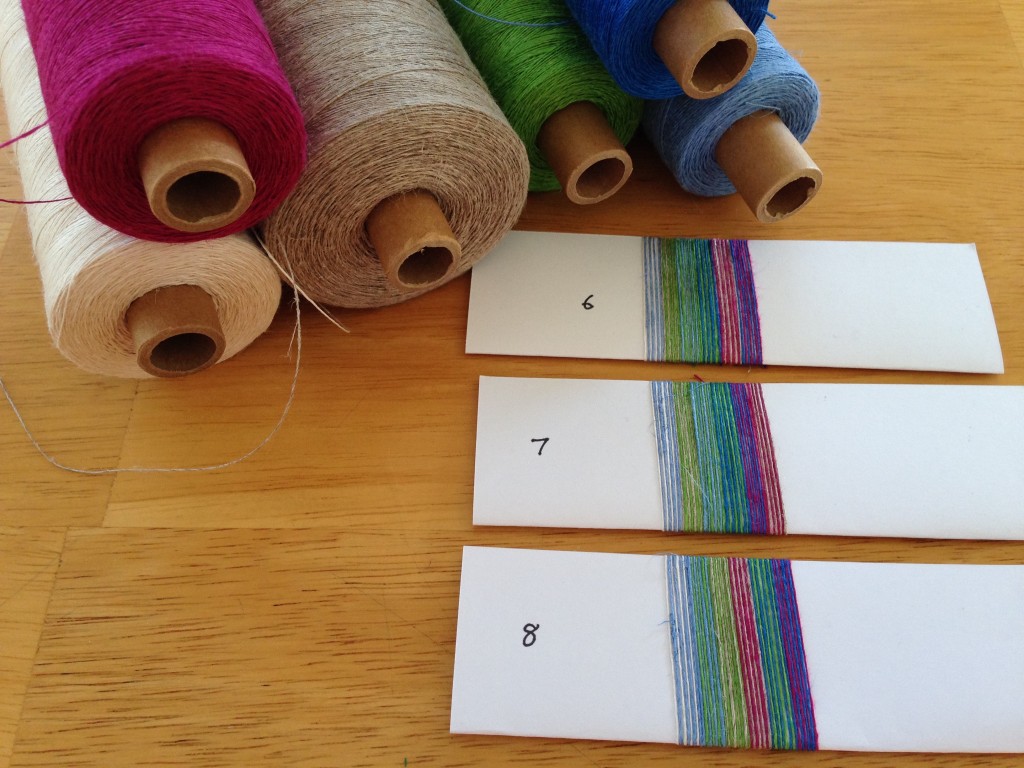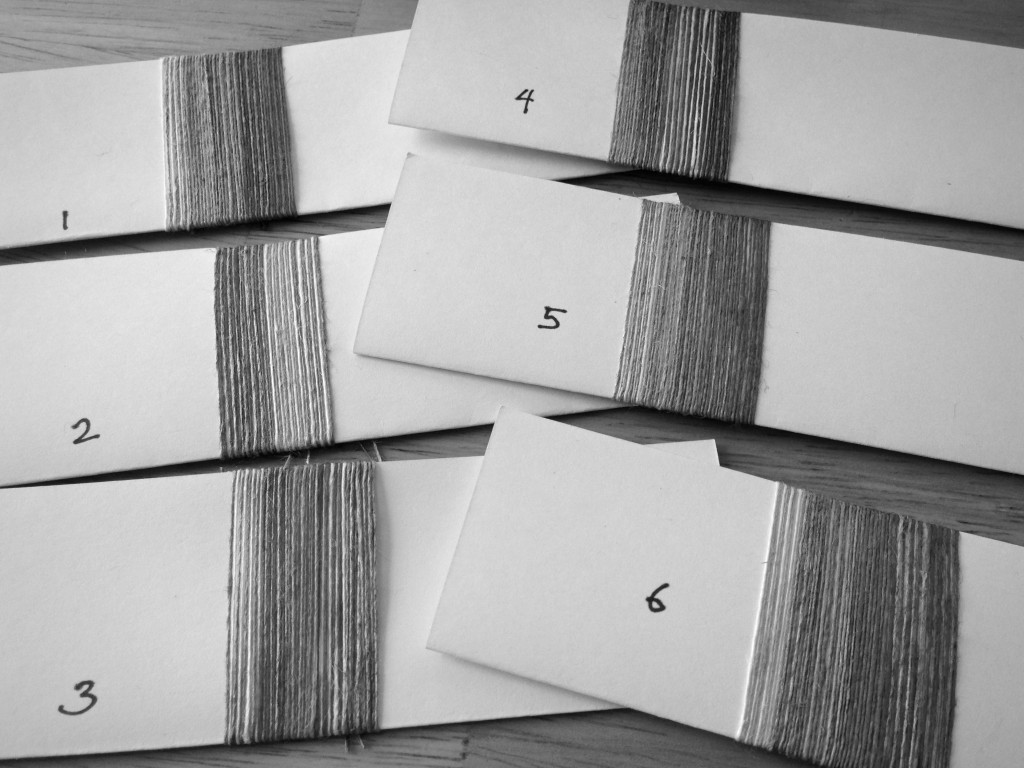Choosing fabric for a rag rug reminds me of song writing. I like to start with a pretty melody. Add some harmony. Write a good accompaniment to finish the song. Be sure to include a good balance of harmony and dissonance to make the music exciting. That’s a good description of my thought process for selecting fabric for a rag rug design.
- Start with a melody–a fabric in the color(s) that you want to use in your design.
- Add harmony–one other fabric that compliments the first one.
- Write the accompaniment–with the chosen pair of fabrics on the table (or in the shopping cart at the fabric store), lay other fabrics beside them, one at a time. Select compatible colors that enhance the “melody” and “harmony.” Eliminate fabrics that “sing a different tune;” but don’t be afraid of unusual combinations. Some dissonance can work in your favor to add interest and excitement to the mix.
Here are a few examples of fabric combinations I am playing around with as I plan my next double binding rag rug design.
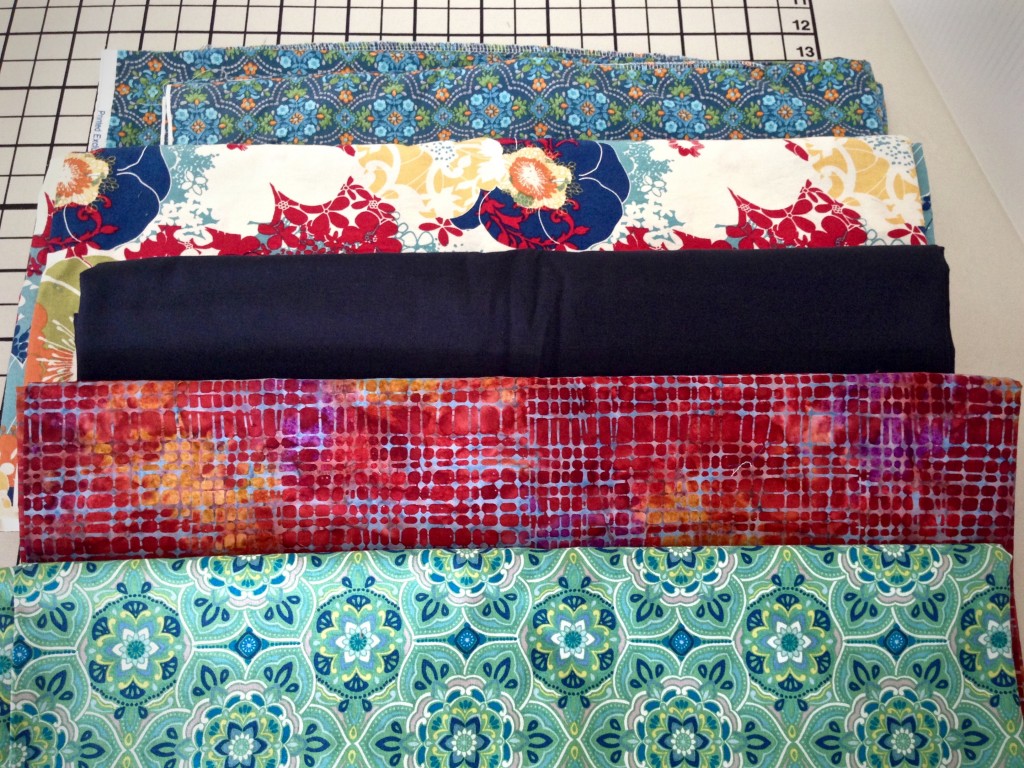
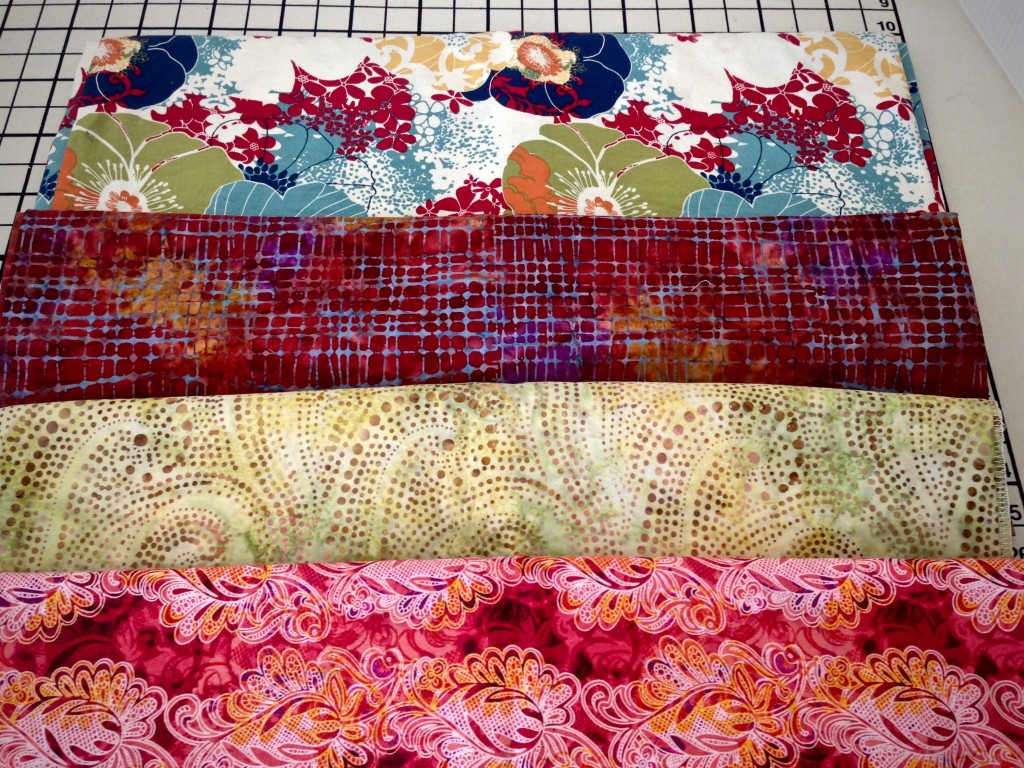
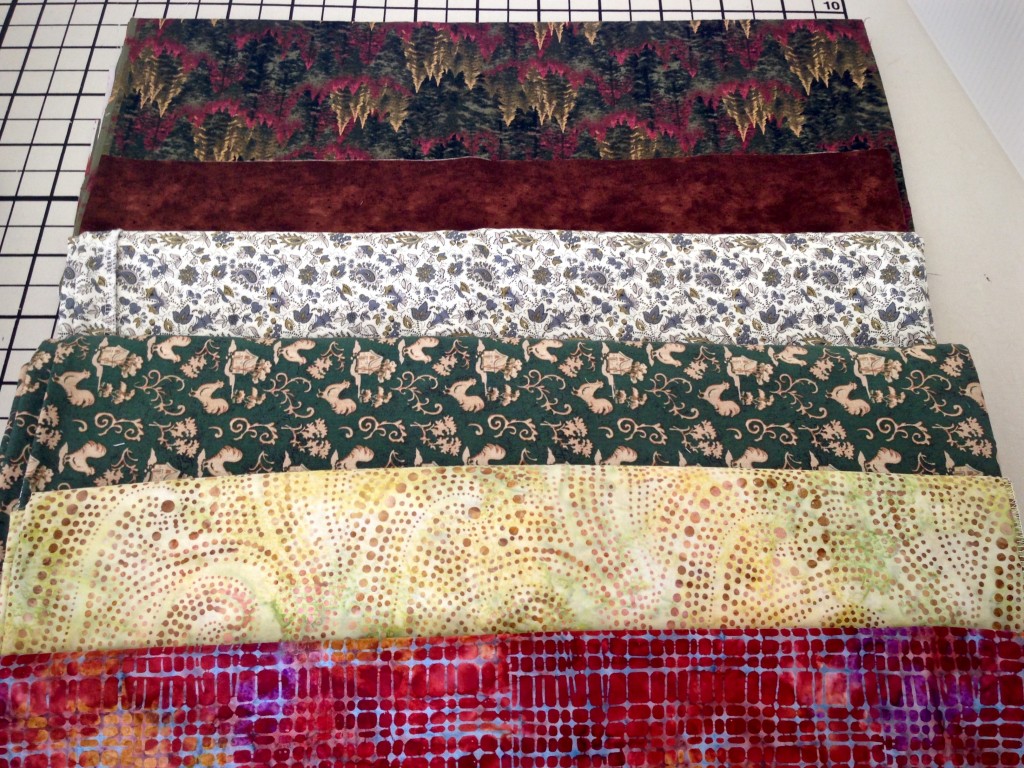

You can view my double binding rag rugs on Etsy to examine some of the fabric choices I have made for previous rugs.
Classic Check; Autumn Clouds; Improvisation; Woodland Walk; Black and Red Squares; Forest at Dawn; Opportunity in Disguise; Painting Sunsets.
May you find a good balance of harmony and dissonance.
With a song in my heart,
Karen

